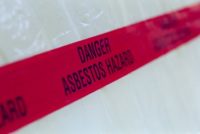Today’s workplace uses thousands of chemicals, many of which are hazardous. The resources in this section will help guide you in the safe and legal identification, storage, transport, and use of these chemicals, and in making sure that your employees right to know how to be safe around such substances is provided, as required by law.
In its revisions to the Worker Protection Standard ((WPS), November 2, 2015, Federal Register (FR)), the EPA introduced a new term—application exclusion zone (AEZ). AEZ replaced entry restricted area, a phrase included in the Agency’s proposal under which people other than approved pesticide handlers were prohibited from entering both outdoor areas treated with pesticides and […]
Carbon monoxide (CO) in quantities that exceed OSHA’s permissible exposure limit (PEL) of 50 parts per million (ppm) as an 8-hour time-weighted average (29 CFR 1910.1000 Table Z-1) can occur in indoor work areas where fuel with a carbon content (e.g., natural gas, gasoline, kerosene, oil, propane, coal, wood, or plastic) is incompletely combusted. One […]
The June 2016 amendments to the Toxic Substances Control Act (TSCA) expanded the categories of persons who may request confidential business information (CBI) about chemicals, which regulated entities submitted to the EPA.
Are you an expert on Safety Data Sheets? See how you stack up with this 10 question quiz.
Section 8(b)(10) of the amended Toxic Substances Control Act (TSCA) directs the EPA to develop an inventory of mercury supply, use, and trade in the United States and, based on that inventory, recommend actions, including proposed revisions of federal law or regulations, “to achieve further reductions in mercury use.” To create the inventory, the section […]
As part of its efforts to improve implementation of the amended Toxic Substances Control Act (TSCA), EPA’s Office of Pollution Prevention and Toxics (OPPT) has updated its guidance document, Points to Consider When Preparing TSCA New Chemical Notifications. The EPA notes that it has incorporated comments from a December 2017 public meeting and feedback received […]
After being hit with two lawsuits that claimed it was unlawfully delaying a key training requirement in its 2015 revisions to the Worker Protection Standard ((WPS), November 2, 2015, Federal Register (FR)), the EPA announced that it intends to change its position, thereby—and tentatively, at least—conceding to the demands of the plaintiffs.
The Trump EPA has issued a final rule to add a nonylphenol ethoxylates (NPEs) category to the list of toxic chemicals subject to reporting under Section 313 of the Emergency Planning and Community Right-to-Know Act (EPCRA) and Section 6607 of the Pollution Prevention Act (PPA). The rule had been proposed by the Obama-era EPA and […]
The Occupational Safety and Health Administration’s (OSHA) Hazard Communication Standard gives workers the right to know about the chemicals and chemical hazards in their workplace. But is knowing enough? This was the question addressed by Ann Lindsey, Vice President of Decision Point Associates, at the American Society of Safety Professionals’ (ASSP) Safety 2018 Conference and […]
As part of a trio of actions taken under the 2016 amendments to the Toxic Substances Control Act (TSCA), the EPA has proposed the first-ever Significant New Use Rule (SNUR) for asbestos.










